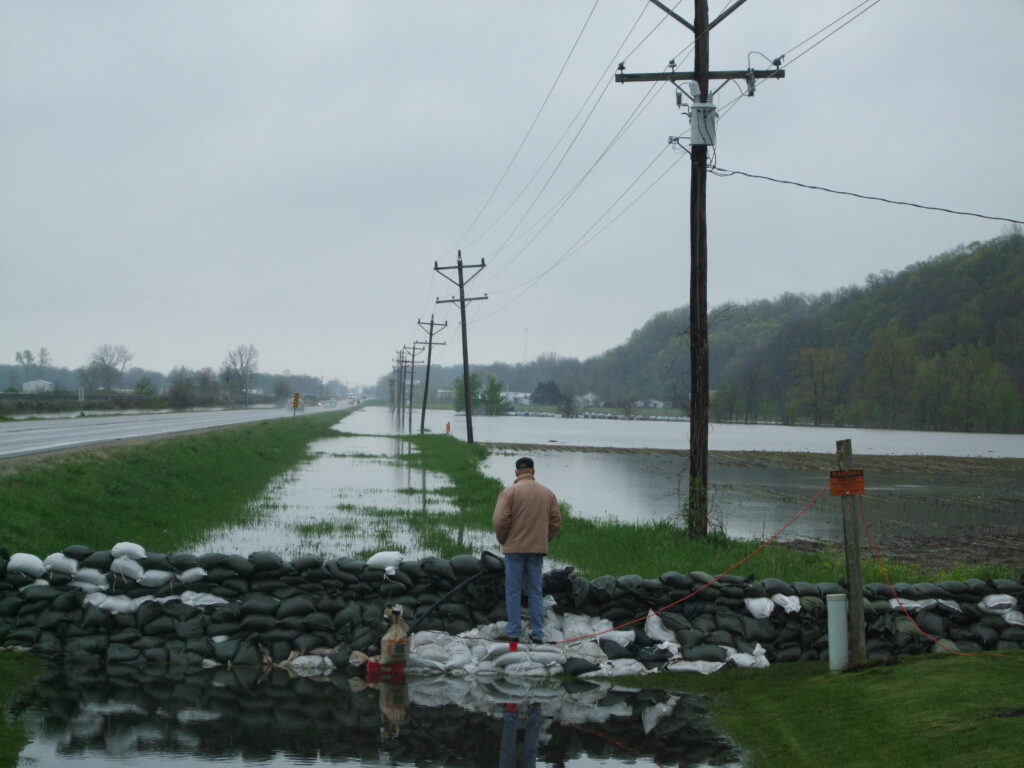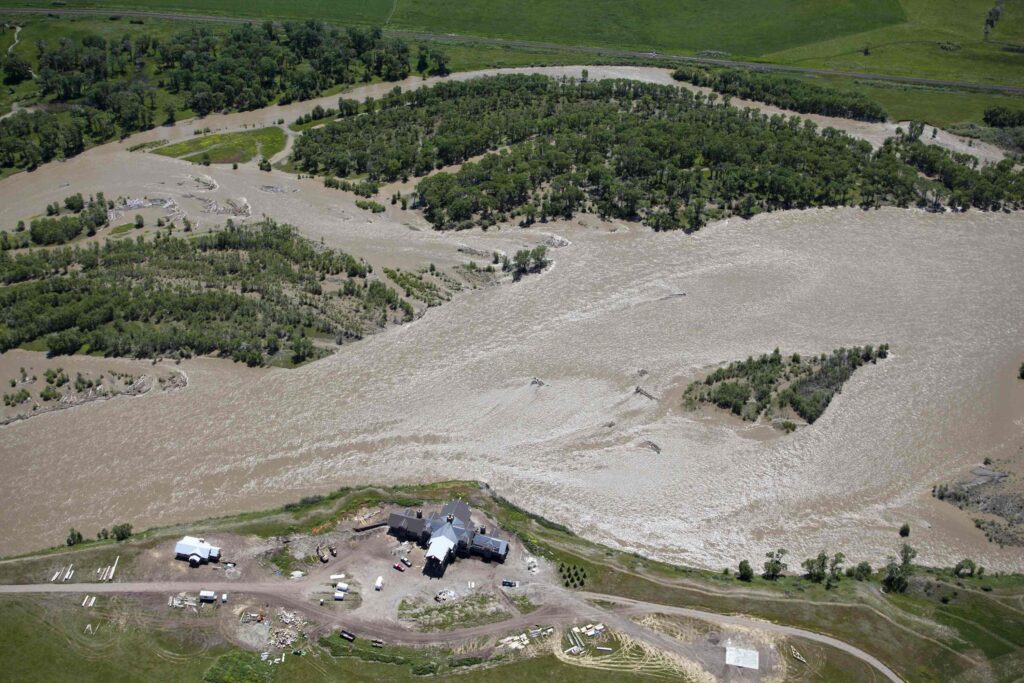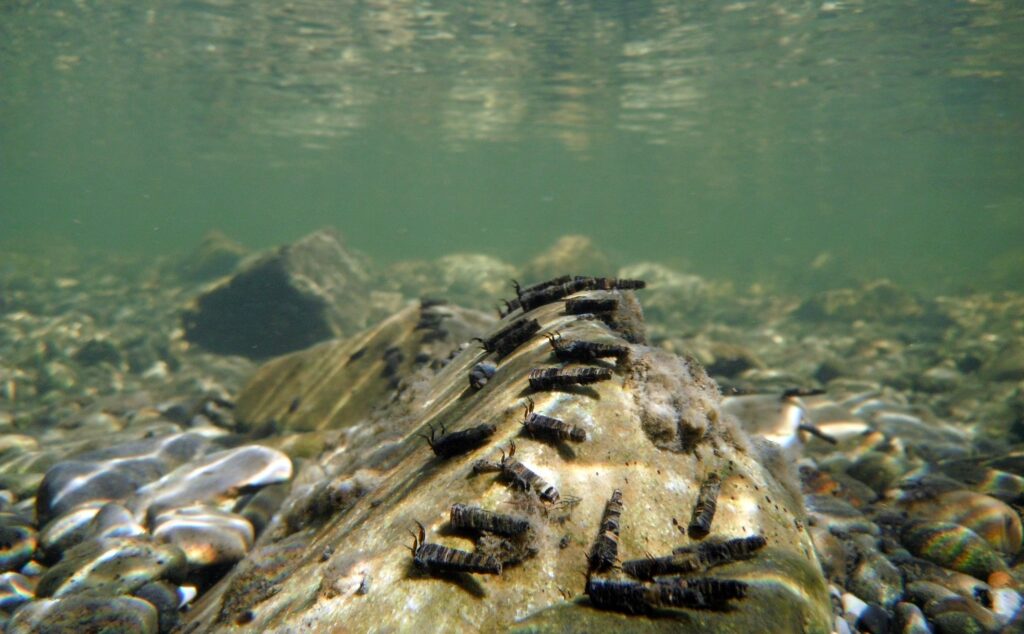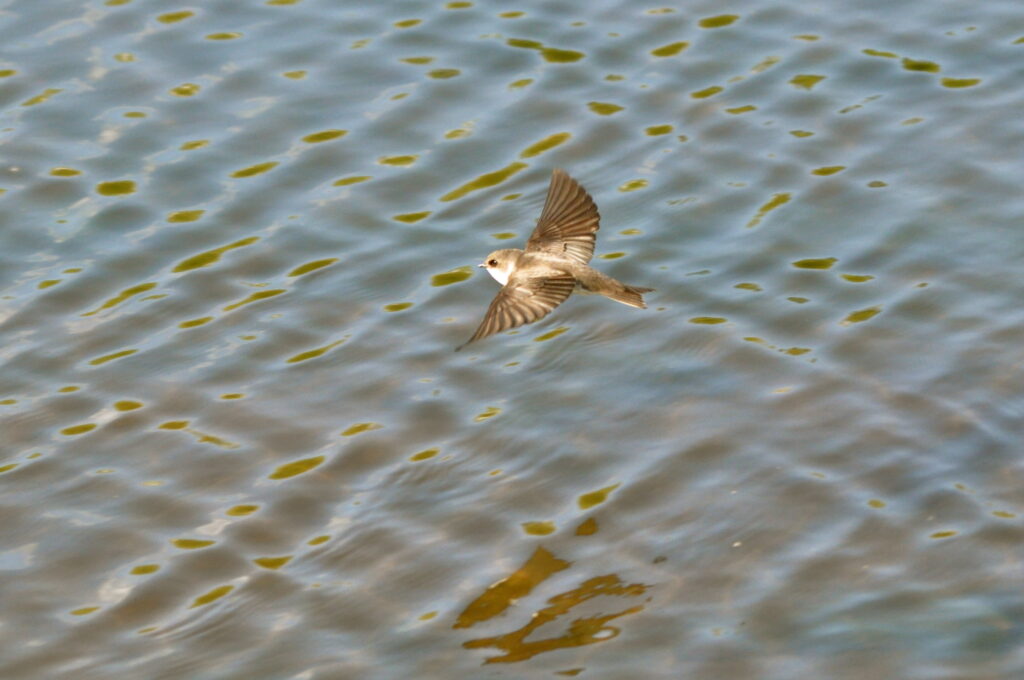
A healthy river system isn’t static. The flow of a river changes dramatically over the course of a year. The tremendous energy of the spring freshet or a flood event will move boulders, rocks, and sediment to rearrange pools, riffles, and runs to new configurations. A river system like the Connecticut that flows through the soft sediment laid down over thousands of years meanders and moves around its floodplain. A healthy river system is dynamic and dramatic, and many river critters have evolved to live amidst this energy and change.
One of those river critters is the bank swallow, whose Latin name of Riparia riparia doubles down on this fellow’s connection to rivers. Avid birders living in southern New England may have followed the dramatic late summer murmuration of the tree swallows that congregate by the hundreds of thousands in the river’s estuary to rest and feed before their southern migration. This murmuration has been celebrated by Roger Tory Peterson as one of the most dramatic natural events he ever experienced.
The bank swallow does not attend that particular avian party in the Connecticut River’s estuary. Riparia riparia is also a social species that nests in colonies they seem to prefer smaller and less dramatic but still noticeable gatherings a bit farther upstream on the Connecticut River.
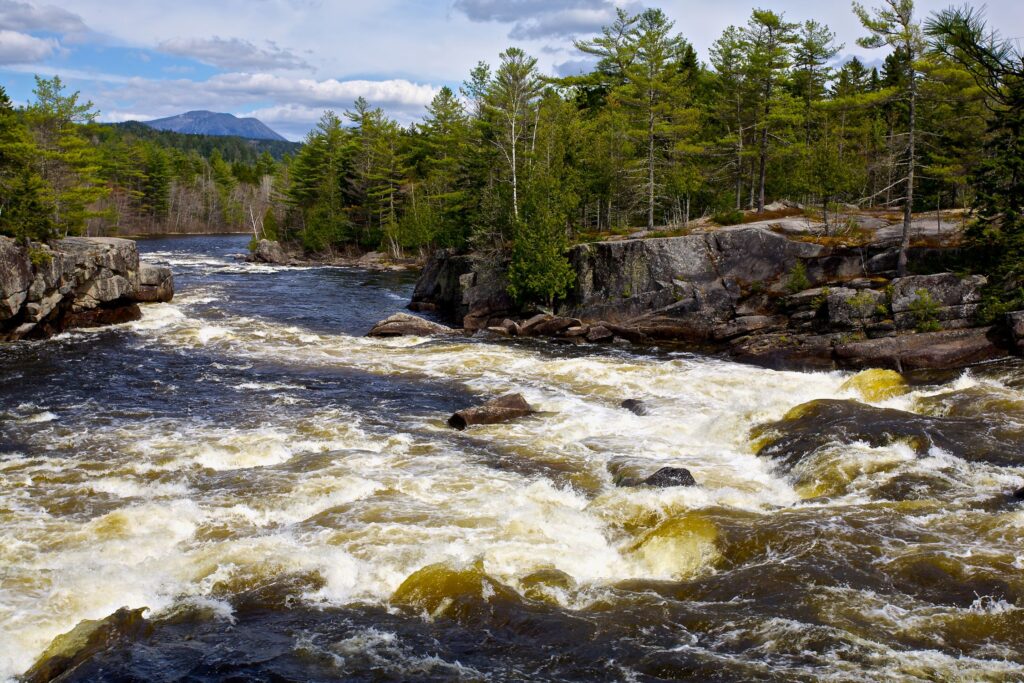
Let's stay in touch!
We’re hard at work in the Northeast for rivers and clean water. Sign up to get the most important news affecting your water and rivers delivered right to your inbox.
I spend a lot of time on the Connecticut River north of my home in Holyoke, Massachusetts, including many special trips along the stretch between Lemington, Vermont and Lancaster, New Hampshire. This stretch includes many miles of meanders north of the reaches impounded by hydropower dams. There are many places along the entire river to spot bank swallows, but I have had wonderful visits with these tiny birds in this reach. The gradual bends and turns of the meanders are great places to spot bank swallows. The eroding banks created by energy of water moving around the meander curves exposes the soft and friable alluvium that makes the Connecticut River valley soils so productive. It is easy to spot the dozens of small entrance holes to the bank swallow nests as you round a corner. And while the outside of river bends are always eroding, the inside bends usually provide a wonderful beach from which you can sit and watch the aerial ballet. And at certain times of years if you watch the nests carefully you can see the chicks waiting in the doorway for a food delivery from mom (or dad?).
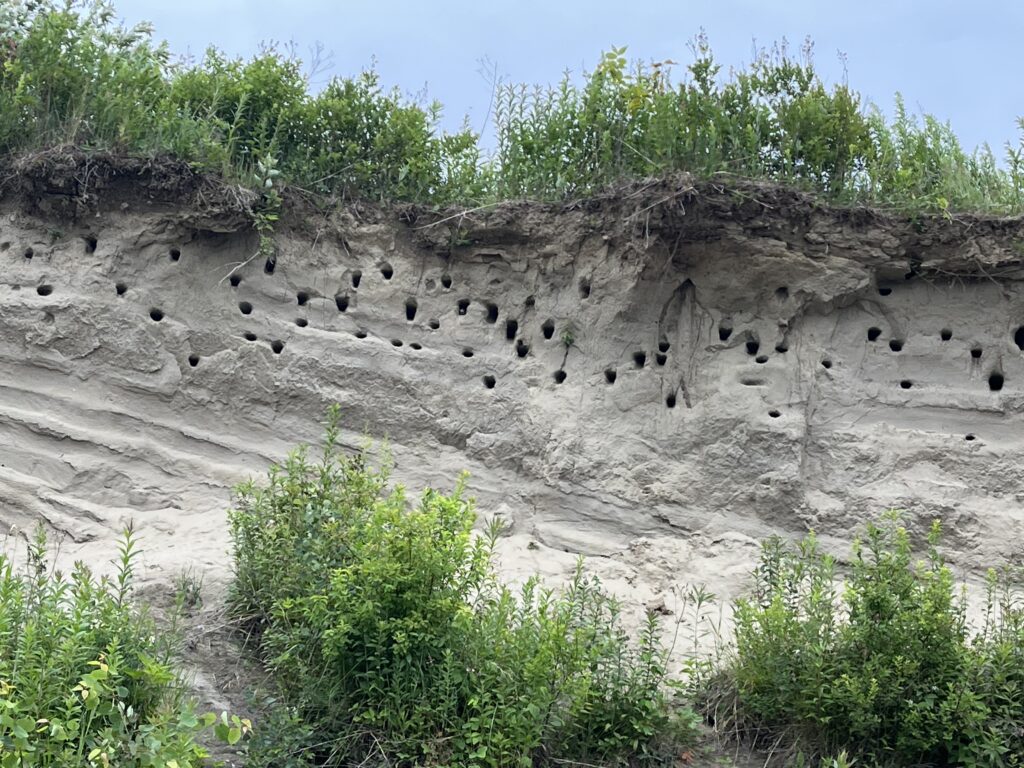
The bank swallows are the smallest species of swallow and have the characteristic angular wing and tail shape of the swallow family with a similar tawny coloration to many of their cousins. They are not as brightly colored as the blue-green of the tree swallow, but they are fetching enough I say. If you have had a chance to stop and watch the bank swallows dart, swoop, dive, and swerve just over the surface of the water you’ve seen these little birds in their glory. Their strength and grace in pursuit of one tiny insect after another is a humbling reminder of the effort these birds make to survive and thrive.
The experts say that the population is healthy, which is good news. Part of the reason for that healthy population is the abundant riverine habitat along the banks of the Connecticut and other alluvial river systems.
That however is a good news / bad news story.
While alluvial river systems like the Connecticut River naturally erode and move and meander around their flood plains, humans have artificially increased bank swallow habitat by cutting down the bankside floodplain forests for agriculture, development, and views. The loss of riparian forests accelerates bank erosion, particularly the loss of the majestic silver maples with root systems able to hold together our friable soils. So while the bank swallows can easily adjust to an eroding bank by digging out a deeper or newer cavity, fixing eroding banks that eat away prime agricultural soils or eventually undermine houses and structures is not an easy fix. A healthy riparian forest allows a river to move at its own pace which creates abundant natural bank swallow habitat while protecting human homes. These little birds with little brains have evolved to succeed with healthy riparian forests.
With our big brains and creativity, we can too.
Here’s to the strength and dynamic energy of the bank swallow, a successful resident of our river valleys. I pay homage to those same characteristics that I see in the many human residents working on behalf of rivers everywhere to make them a better place for everyone and everything.
A version of this blog was first published in the Winter 2024 edition of Estuary, a quarterly magazine for people who care about the Connecticut River; its history, health, and ecology—present and future. Find out how you can subscribe at estuarymagainze. com
